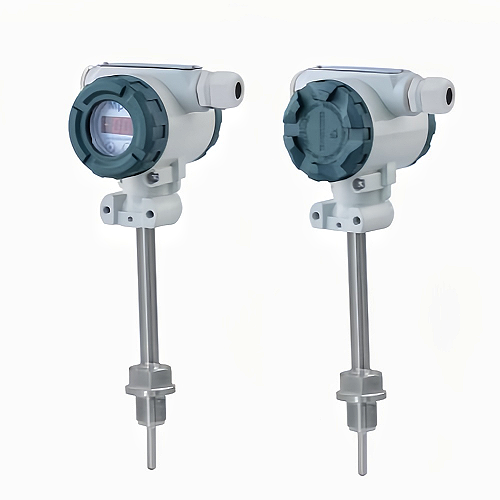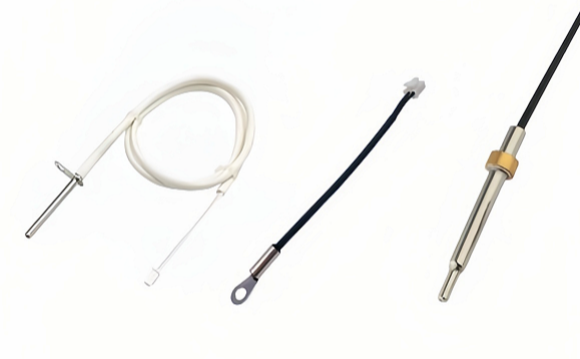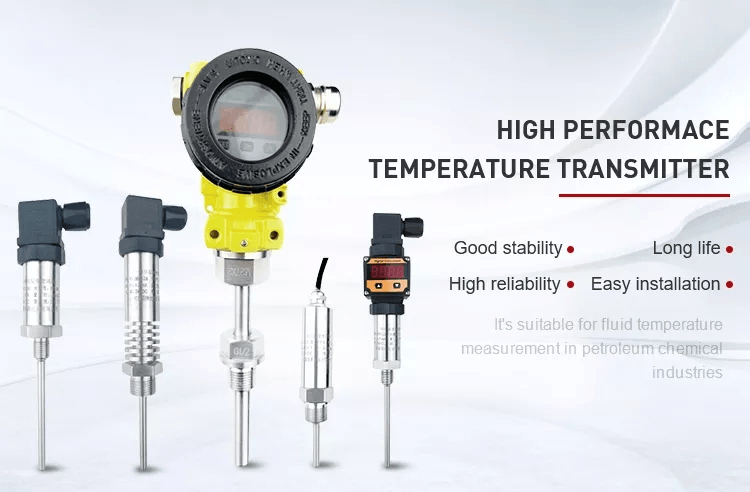BETTER TOUCH BETTER BUSINESS
Contact Sales at KAIDI.
Temperature is defined as the energy level of a substance and can be demonstrated by certain changes in that substance. There are many types of temperature measurement sensors and they all have one thing in common: they all measure temperature by sensing some change in physical properties.
The seven basic types of temperature sensor transmitter discussed here are thermocouples, resistance temperature devices (RTDs, thermistors), infrared emitters, bimetallic devices, liquid expansion devices, molecular state changes, and silicon diodes.
Whether it is a thermometer or a thermocouple, different types of sensors can measure temperature.

1. Thermocouples
Thermocouples are voltage devices that indicate temperature measurements as the voltage changes. As the temperature increases, the output voltage of the thermocouple rises - not necessarily linearly. Thermocouples are usually located inside a metal or ceramic shield to protect them from exposure to various environments. Metal jacketed thermocouples are also available with many types of external coatings, such as Teflon, for trouble-free use in acids and strong alkaline solutions.
2. Resistance Temperature Measuring Devices
Resistance temperature measuring devices are also electrical in nature. Instead of using voltage like thermocouples, it utilizes resistance, another property of matter that varies with temperature. And the resistive devices used can be categorized into: metal resistance temperature devices (RTD) and thermistors. In general, RTDs are more linear than thermocouples. They increase in a positive direction, with resistance rising as the temperature increases. A thermistor, on the other hand, has a completely different type of construction. It is an extremely non-linear, semi-conducting device that decreases in resistance as the temperature increases.

3. Infrared sensors
Infrared sensors are non-contact sensors. For example, if you hold a typical infrared sensor up to the front of a table without contact, the infrared liquid level sensor will tell you the temperature of the table by its radiation - about 68°F at normal room temperature. In non-contact ice water measurements, due to evaporation, the ice water measures slightly at 0°C, which slightly reduces the expected temperature reading .
4. Bimetallic Devices
Bimetallic devices take advantage of the expansion of metals during heating. In these devices, two metals are combined and mechanically connected to a pointer. When heated, one side of the bimetallic strip will expand more than the other. And when properly aligned with the pointer, it will display the temperature measurement. The advantages of bimetallic devices are portability and independence from the power source. However, they are usually not as accurate as electrical devices, and you can't easily record temperature values with electrical devices like thermocouples or RTDs. But portability is a definite advantage for the right application.
5. Thermometers
Thermometers are familiar liquid expansion devices that are also used for temperature measurement. In general, they fall into two main categories: the mercury type and the organic (usually red) liquid type. The difference between the two is clear, as mercury devices have some limitations on how they can be safely transported or shipped. For example, mercury is considered an environmental contaminant, so breakage can be dangerous. Be sure to check current restrictions on air transportation of mercury products before shipping.

6. Change of state sensors
A change of state temperature sensor measures the change in state of a material brought about by a change in temperature, like the change from ice to water to steam. Commercially available devices of this type are in the form of labels, pellets, crayons, or paint.
For example, labels can be used on steam traps. When the trap needs to be adjusted, it gets hot; the white dot on the label then indicates the rise in temperature by turning black. The white dot remains black even when the temperature returns to normal.
The Change of Condition label indicates the temperature measurement in °F and °C. For these types of devices, the white dot turns black when the displayed temperature is exceeded; and it is an irreversible sensor that stays black once it changes color. Temperature labels are useful when you need to confirm that the temperature has not exceeded a certain level, perhaps during transportation for engineering or legal reasons. Since change of state devices are non-electrical like bimetallic strips, they are advantageous in some applications. Some forms of this family of level sensors (lacquer, crayon) do not change color; the markings they make simply disappear. Granular forms, on the other hand, will visually distort or melt away completely.
Limitations include relatively slow response times. So if you have a spike in temperature that goes up and then quickly goes down, there may not be a noticeable response. Accuracy is also not as high as most other devices commonly used in industry. However, they are very practical in applications where you need non-reversible indications that do not require a power source.
Other reversible labels operate on a completely different principle than using an LCD display. Depending on the temperature reached, the display changes color from black to brown, blue or green.
For example, a typical label is all black at temperatures below that sensed. As the temperature measurement rises, a color appears at, say, 33°F-first blue, then green, and finally brown-as it passes through the specified temperature. In any given LCD device, you will usually see two adjacent color dots - the blue one slightly below the temperature indicator and the brown one slightly above it. This allows you to estimate the temperature, for example, between 85° and 90°F.
Although it is not entirely accurate, it has the advantage of being a small, rugged, non-electronic indicator that continuously updates the temperature measurement.
7. Silicon Diode
Silicon diode sensors are devices developed specifically for the low temperature range. Essentially, they are linear devices where the conductivity of the diode increases linearly in the low temperature region.
No matter what sensor you choose, it will not work alone. Since most sensor choices overlap in temperature range and accuracy, the choice of sensor will depend on how it is integrated into a system.
We are here to help you! If you close the chatbox, you will automatically receive a response from us via email. Please be sure to leave your contact details so that we can better assist